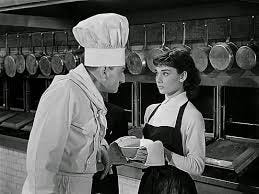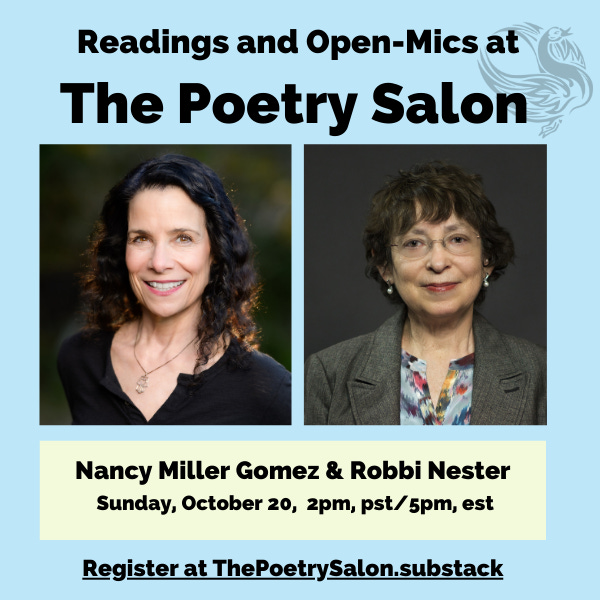Hi poets, writers and friends,
When you subscribe to this Substack, you get access to a free reading and open-mic with two guest poets each month.
Become a paid subscriber, and you will also get access to 3 monthly workshops with me (Tresha) and special guest facilitators! Paid subscribers will see the link to these workshops at the bottom of this email.
What I ate while waiting for the world to end.

You learn a lot about yourself during about yourself during a pandemic.
Especially if you are stuck inside with your spouse in a foreign country for months on end with nobody else around. I spent the year 2020 in lockdown with my husband, in Costa Rica.
Like most people I knew, I thought I would use my time forcibly trapped indoors to better myself. I would finish my novel, learn Spanish, and develop a robust exercise routine to improve my posture and perfect my lunge.
I thought I might use this opportunity to learn more about how social media worked and how to become an influencer online. I’d finally learn what an algorithm is and how to use it to get more attention for my poetry. Like all Americans, I made Tik Tok videos about my cats.
Like all Americans, I made Tik-Tok videos about my cats.
But when these things proved to be difficult, and only three or four people would responded to my posts, I eventually gave up. Or, not, “gave up” but simply put those projects on the back burner.
One thing I did like to do, and put a lot of effort into is learning to cook.
What was your “dream job” when you were a child?
When I was a child, my first dream job was to become a cook. I’ve always loved kitchens. I love connecting with food because it’s a way of connecting with the environment. And at the end of the day, you have something delicious to eat.
In L.A. I could get almost anything I wanted at any time. I lived near little Ethiopia and could get Tej and honey wine down the road. I could go to the Indian Sweets, a Buffet off of Venice Blvd. and get samosas and roti and saag paneer. If I wanted Persian food I had my pick of restaurants. Chinese, Vietnamese, Italian, they were all at my fingertips. If I didn’t want to spend the money on restaurants I could get almost anything I wanted pre-made at Trader Joe’s.
In Small Town Costa Rica There Are Only Two Kinds of Restaurants.
But in Costa Rica, unless you go to the major cities, there are only two kinds of restaurants. Tico restaurants that serve Typical, meaning rice, beans, meats and salad, or Pizza restaurants which serve Pasta and Za. I’ve never understood why this. Though Costa Rican food is pretty simple, the ingredients that grow here are as diverse and plentiful as any in Indian spice rout. Even at my local fruteria I can get fresh bulbs of turmeric, ginger, cilantro, parsley, peppers, both sweet and hot. And coconuts are everywhere. There’s no reason someone couldn’t open an Indian restaurant or Thai or Chinese place here. But for some reason, nobody does. If we want any of those kinds of exotic foods we either have to go to Liberia or San Jose, or we have to learn to cook them for ourselves here.
Which is what I do. Over the course of the pandemic I learn to make all of the foods I miss from restaurants in Los Angeles. I learn to make Ash Reshtah Persian greens and beans soup with yogurt and crispy mint from Persia, learn to make chilaquiles from Mexico, I learn to make my own Naan and Daal from India. I learn all the things you can do with an onion, sauté, caramelize, pickle. I mix chipotle into sour cream like they do at the fancy restaurants I used to go to in Santa Monica. I used to think all of this was too complicated for me to do on my own and so I had counted on fancy restaurants to do it for me. Now I found how easy it was to turn my own kitchen into a four star restaurant with just a little extra time and know how.
I start to incorporate tropical fruit into new recipes. Add rings of pineapple to veggie burgers. Add tamarind fruit to watermelon to make frescas. Make Hawaiian Lilikoi butter. Pretty soon I feel like that character in Cyrano de Bergerac who is actually a full time baker, who only writes poetry on the side. My life as a writer has become completely sidelined by my life as a full-time personal chef.
At first this was fun. It made me feel connected to nature, constantly handling fruit, looking at the bright colors of the tropical vegetables, consistently having something sweet and tangy to stick in my mouth. It also gave me something to do with my growing anxiety over what was going on outside of the world.
In the first house we lived in we had a giant Carambola tree outside our window, or, in English a Starfruit tree. The tree was so large that when you went to pick fruit from it, you felt like you were in another world. The branches draped over you, creating a roof of glossy green leaves and the starfruit would hang like yellow torpedoes hanging from the roof of heaven. It was its own ecosystem full of insects and birds.
The first morning we arrived I walked out the door towards the tree and the whole tree seemed to grow eyes and all the leaves flocked away. It was like something out of a surrealist painting. A whole flock of conures had been eating from the tree and when they heard me coming they had taken wing.
One afternoon, lifting a branch to get at some fruit I found the nest of a paper wasp that was the size of my own head. I stood under it and watched the little golden abdomens of the wasps flicker up and down as they piled in and out and thought about what it would be like to live in such a nest, so close to my neighbors, and to open the door of my house and stare out at a sheltering of leaves.
But there was a problem with our starfruit tree. It just produced too much fruit.
Starfruit is a delicate kind of fruit. When it falls, it smashes against the ground and bugs start eating it immediately. Branches and branches of starfruit fell every day into the ground and immediately the bugs would start to consume it. I started to get very anxious about all this fruit going to waste, so I looked up recipes for how to preserve starfruit. Most of the recipes involved sugar, turning the fruit into juice or jelly or toppings for ice cream.
I spent all afternoon in my kitchen, slicing, deseeding, then stewing the fruit over a hot stove. After two months I had several freezer bags full of sweetened, stewed starfruit, popsicles made with sweetened starfruit juice, and even pickled star fruit I could put on veggie burgers or add to salads. My favorite recipe was pickled starfruit with goat cheese on crackers. I was enjoying my new recipes, and I was gaining about twenty pounds a day trying to eat all of the fruit myself.
If you are like me and very judgmental, you are probably asking, “why don’t you share it with others? There are starving people in the world. Give it away.” To which I want to respond, “believe me, I tried.”
Sometimes people would walk by the house and signal to me that they wanted to pick some starfruit and I would not only say, “yes, si. Bievenedos” I would grab a plastic bag and run out the door and help them pick some fruit, and shout, “take as much as you can, take as many fruit as you can carry, give it to your neighbors, use it to feed your children.”
Why not share the wealth?
Sometimes they would accept a bag and sometimes they would run away, not knowing what I was shouting at them in English.
Later I would come into contact with the poet Jen Karetnik, who wrote about a similar experience she had with owning a grove of mango trees. Her book, Inheritance with High Error Rate won the Cider Press Review Book Award. The fact is, that harvesting and preserving so much fruit is a lot of work. One woman simply cannot do it on her own, just as one woman cannot be the head of an international restaurant on her own.
Astute readers will remember that I did not come to Costa Rica alone. I brought a husband with me. You might ask, why didn’t I ask my husband to help me harvest fruit and cook, and share in the responsibility of consuming so many calories.
My husband has many good qualities, but being a cook, good or otherwise is not one of them. He prefers to be indoors, preferably online, and snacking on something bland and American like cornflakes. Often I’d spend the afternoon over a hot stove stirring fresh ginger into a pot of daal, or making lentils in a homemade BBQ sauce, topped with chunks of pineapple and served sloppy joe style over bread I had baked myself, and he would come downstairs, walk right past me, and go to the pantry for cereal.
Stop, I’d say, I’m making something much better, more filling, more nutritious, it will be ready in ten minutes.
No thanks, he’d say, I only feel like cornflakes tonight.
Reader, during a pandemic in a foreign country, you can learn a lot about your spouse, their strengths, their weaknesses, the limit of your love, the boundaries of your patience with each other.
At this point I got it into my head that maybe I would teach my husband how to cook.
He was not enthusiastic about this, but I convinced him to at least try. “In case something happens to me” I said. “In case a leopard in the jungle eats me or I drown in the next rainy season, you should be able to take care of yourself.” I say.
I start by trying to teach him to make something simple, like scrambled eggs. I show him how to crack the eggs with one hand like they do in the 1950’s version of the movie Sabrina where she goes to France to learn how to cook. I teach him to mix the eggs up with some milk and salt and pepper, then how to grease the frying pan and turn the temperature to medium and let the eggs congeal slowly.
“You put milk in the eggs?” He asks. Then says, “Is that why they don’t taste like eggs when you make them?”
I hate the taste of eggs. The only reason I eat them is because I need the protein, and I always mix my eggs with as many other things as I can get my hands on. I add onions and vegetables and plenty of cheese, just to disguise the flavor.
“But I love the taste of eggs” my husband says. I’m going to skip adding the milk to enhance the flavor he says.
This is the end of our cooking lessons. It is true that I am tired from doing so much cooking myself. Some days my feet are sore from peddling my bike up the road with groceries, my back hurts from standing up so long, my arms are tired from all the chopping I do. But the only thing worse than doing all this work alone, is trying to do this work with someone who likes the taste of eggs.
Is this Pura Vida? I ask myself. Just picking fruit and cooking things over a fire until you die?
When I consult my yellow coffee table book, put out by the national beer company, I notice something. All the pictures of folks in the Pura Vida coffee table book the thing they have in common is that they are all hanging out with other people. They too are connecting with nature, and preparing food. There are lots of photos of people fishing, harvesting bananas, serving up ceviche and drinking beer - but all of it with friends.
I guess in a quarantine, far from home, displaced from your normal friend group, you learn something about your values. Very little in life is really worth doing or having if you don’t have someone to share it with. My writing community on Zoom is wonderful, but they cannot take all of this fruit off of my hands. It is very clear we need more community in our lives.
Fortunately, around this time the restrictions start to lift, and the rain lets up, and that’s when the Canadians arrive.
That’s when the snowbirds returned to Coco from Canada
One morning I walked down the beach, which had been almost deserted for months, and saw a group of people doing yoga in the sand. I waited patiently as they transitioned from downward dog into plank and then child’s pose and back into corpse, and then, when they dispersed, I walked up to a particularly friendly looking woman with curly blond hair and asked, “Is this a Yoga group open to anyone? Can I join?”
She looked at me, squinted, and said, “It’s me. Nel. Don’t you remember me from last year?”
I did not remember her, but that didn’t stop me from saying “Nel, it’s good to see you again.” She reminded me that she was in Coco last year, before the pandemic, and that she and her husband had met me at Guoyoyo Coffee while walking their little fluffy white dog. She and her husband had spent the quarantine freezing their tuckuses off in Canada but had just returned now that the border was open again, and she asked if I wanted to join the yoga group she hosted every morning at 9 a.m.
Reader, you learn a lot about yourself when far from home, deprived of human contact during a quarantine. One thing you should know about me is that I do not enjoy doing exercise as a hobby. Riding my bike for transportation is one thing. Cooking to make food is one thing, but moving my body just for the sake of moving it is something else. However, at this point, I was so starved for group contact that I told Nel I would love to do yoga with her and the other Canadians.
Just like that, I had a community, not far from home.
So the next morning, early in the day, I rode my bike 20 minutes from my house to the other end of the beach to do an hour of Cat-Cow, Downward-Dog, Sun-Moon poses before getting on my bike to ride home again and start my day. And just like that I had the thing I had longed for for so long, a real-life, flesh and blood community of people who lived not far from home.
Here’s what we’ve got for you at The Poetry Salon this month!
Get Links to Our Monthly Workshops Here!
Keep reading with a 7-day free trial
Subscribe to The Poetry Salon with Tresha Faye Haefner and Friends to keep reading this post and get 7 days of free access to the full post archives.








